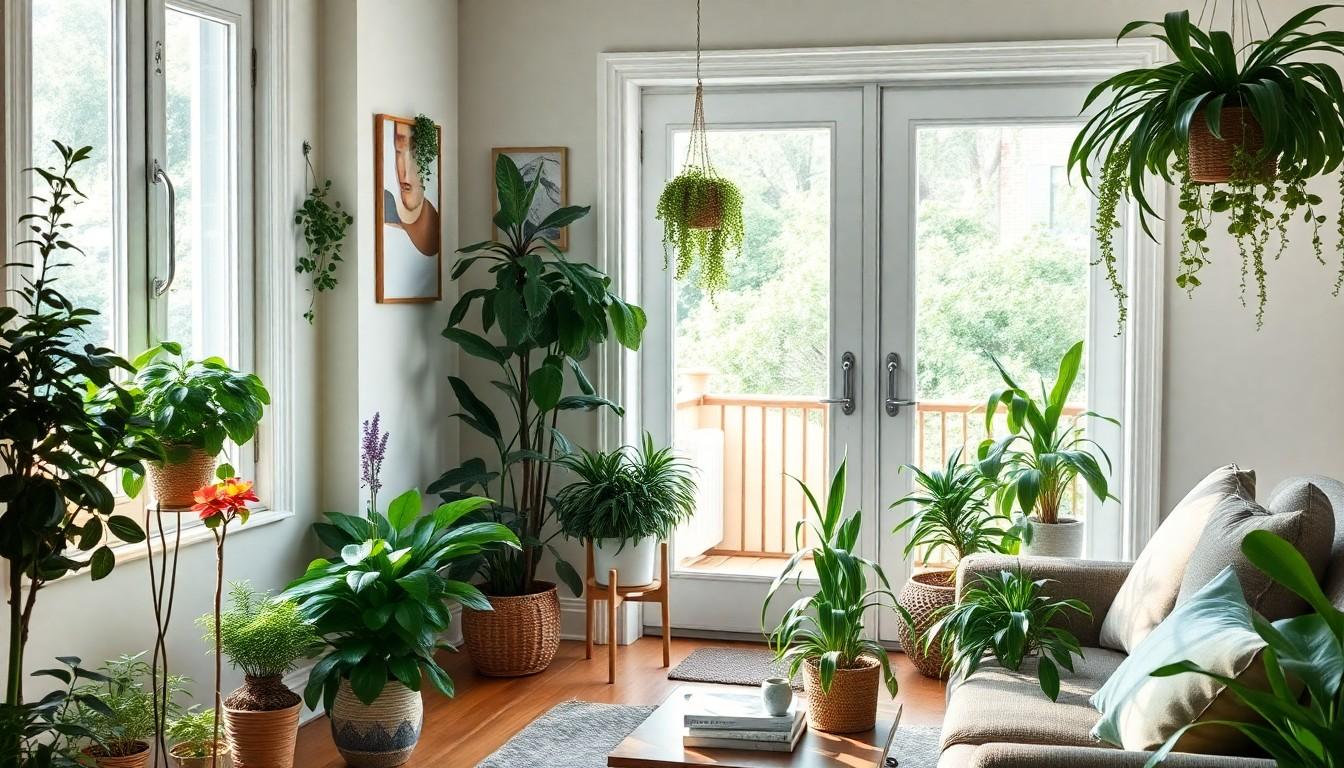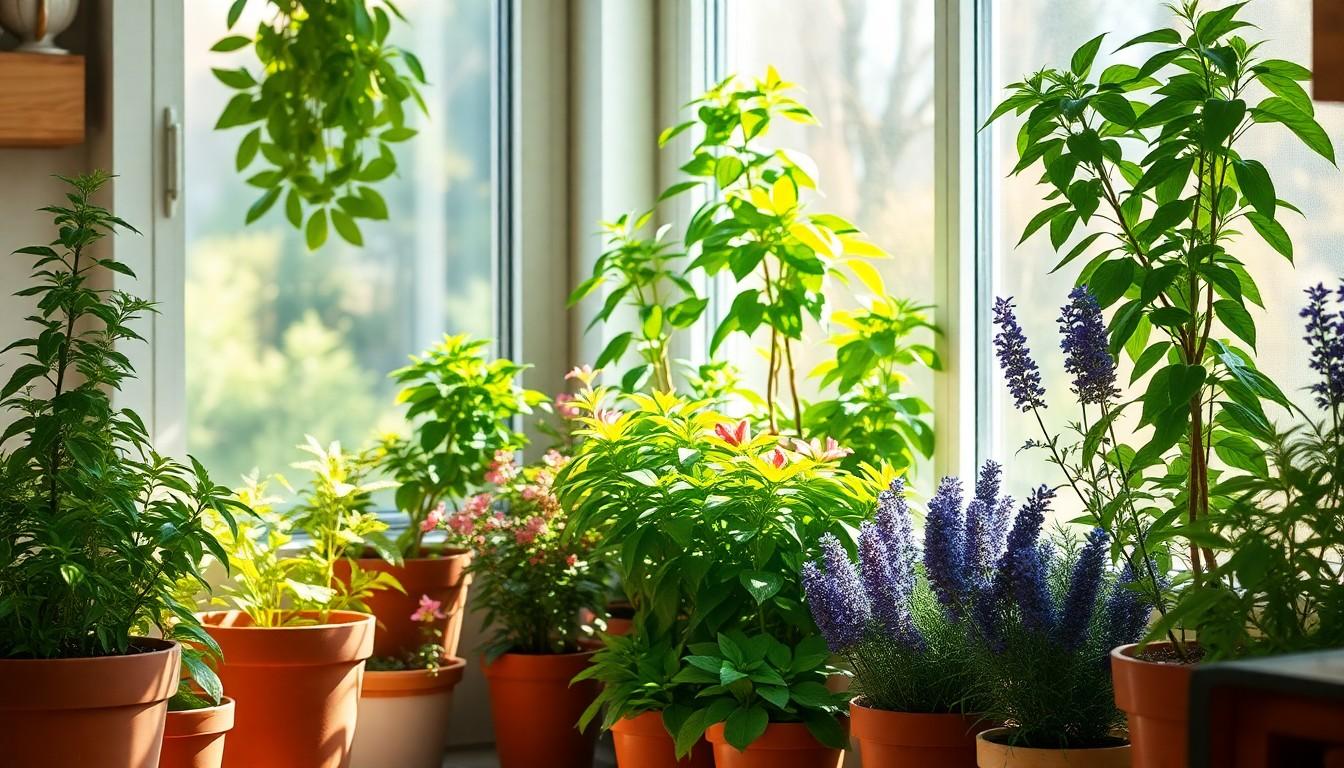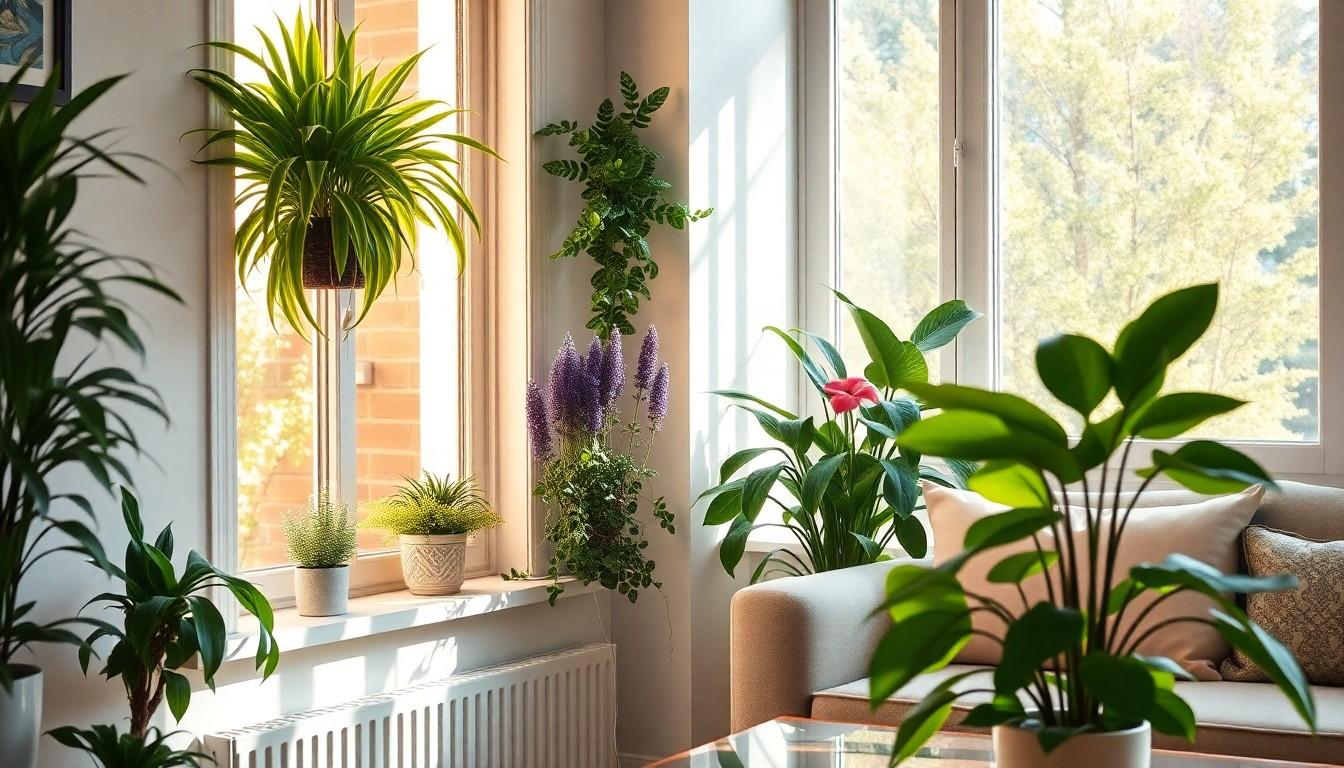Who knew that the secret to a spider-free home could be hiding in plain sight? Indoor plants aren’t just for aesthetics; they can also be your trusty allies in the battle against those eight-legged intruders. Imagine transforming your living space into a serene oasis while simultaneously sending spiders packing. It sounds like a win-win, right?
Overview Of Indoor Plants That Repel Spiders
Indoor plants often provide natural pest control, particularly in the case of spiders. Certain plant species contain compounds that spiders find unappealing. Utilizing these plants enhances home decor while serving the practical purpose of spider deterrence.
Spider Plant (Chlorophytum comosum) thrives in various light conditions and produces a unique fragrance that is unpleasant for spiders. This resilient plant effectively absorbs toxins, promoting a healthier atmosphere.
Peppermint (Mentha piperita) boasts a strong aroma that spiders dislike. Keeping peppermint plants near windows and entryways can significantly reduce spider presence. Its essential oils also act as a natural insect repellent.
Lavender (Lavandula) is another excellent choice. Known for its soothing scent, this plant deter spiders and other pests. Lavender thrives indoors with adequate sunlight and well-drained soil.
Basil (Ocimum basilicum) not only works in culinary applications but also repels spiders. The strong smell of basil helps keep unwanted arachnids at bay. It requires warm temperatures and direct sunlight for optimal growth.
Sage (Salvia) offers a unique blend of aesthetics and pest repellence. The pungent odor emitted by sage plants helps create an unfavorable environment for spiders. Sage prefers dry soil and plenty of sunshine.
Placing these plants strategically around the home can greatly assist in minimizing spider activity. Incorporating such greenery into one’s space promotes both beauty and practicality.
Benefits Of Using Indoor Plants

Indoor plants offer a range of benefits that go beyond aesthetics. They contribute significantly to creating a healthier and more inviting home environment.
Natural Pest Control
Indoor plants like peppermint and lavender provide natural pest control. Their strong scents deter spiders and other unwanted insects. Spider Plants emit an unpleasant fragrance for these pests, keeping them at bay. Placing these plants near windows and entryways can reduce spider presence effectively. By incorporating these plants into indoor spaces, it’s possible to minimize reliance on chemical pesticides. Effective pest management occurs naturally through the plants’ inherent properties.
Improved Indoor Air Quality
In addition to deterring pests, indoor plants improve air quality. Some plants can absorb toxins from the air, leading to a fresher environment. Peace Lilies and Snake Plants excel in filtering formaldehyde and benzene, common indoor pollutants. Healthier air circulation promotes respiratory wellness, benefiting everyone in the household. Plants provide oxygen during photosynthesis, enhancing overall indoor atmosphere. Emphasizing the dual purpose of aesthetics and health underscores the value of integrating these plants into living spaces.
Popular Indoor Plants That Repel Spiders
Indoor plants can effectively deter spiders while enriching living spaces. Below are some popular options.

Lavender
Lavender exhibits a soothing scent that humans enjoy, but spiders find it offensive. Placing lavender in sunlit areas promotes growth and maximizes its pest-repelling properties. This plant requires minimal care, making it suitable for various indoor environments. Maintaining pots of lavender near windows helps keep spiders at bay effectively.
Peppermint
Peppermint stands out with its strong aroma, capable of significantly reducing spider presence. This plant thrives in bright, indirect light and prefers moist soil. Using peppermint oil in a spray can enhance its repelling effect. Positioning peppermint plants near entryways and windows can keep these pests from entering the home.
Spider Plant
Spider Plant thrives in varying light conditions, adapting well to indoor environments. Its unique ability to produce spiderettes gives it a visual appeal, enhancing decorations. Emitting a fragrance that spiders dislike makes it an ideal choice for pest control. Placing Spider Plants in corners or on shelves can effectively deter unwanted arachnids.
Basil
Basil serves dual purposes in the kitchen and as a spider repellent. This herb flourishes under bright light and requires regular watering. Keeping basil in the kitchen not only enhances dishes but also discourages spider activity. Positioning pots near food preparation areas proves beneficial in maintaining a spider-free home environment.
Tips For Choosing The Right Plants
Choosing the right indoor plants requires careful consideration of several factors. Selecting plants that suit the specific conditions of a home environment enhances their effectiveness in repelling spiders.
Consider Your Environment
Assessing lighting conditions is crucial before selecting plants. Bright areas can support plants like basil and peppermint, which thrive in sunlight. Indirect light suits the Spider Plant, making it adaptable to various spots. Additionally, humidity levels play a role; plants like lavender prefer drier conditions. Understanding the temperature range also helps, as many plants thrive in typical indoor temperatures. Analyzing these aspects ensures compatibility and longevity of plants, maximizing their spider-repelling benefits.
Maintenance Requirements
Evaluating maintenance needs aids in plant selection. Some plants require regular watering, such as peppermint, which prefers moist soil. Others, like lavender, need less frequent watering. Considering growth patterns is essential too; Spider Plants can produce offsets called spiderettes, which require minimal care to propagate. Acknowledging light preferences will simplify upkeep; basil flourishes under bright conditions and needs frequent pruning. Overall, selecting low-maintenance options can ensure a hassle-free experience while effectively deterring spiders.
Conclusion
Incorporating indoor plants that repel spiders not only beautifies a home but also contributes to a more pleasant living environment. By choosing plants like lavender peppermint and basil homeowners can enjoy the dual benefits of natural pest control and improved air quality. These plants create a welcoming atmosphere while keeping unwanted spiders at bay.
Selecting the right plants tailored to specific home conditions ensures their longevity and effectiveness. With minimal maintenance and the right care these plants can thrive and enhance both aesthetics and comfort. Embracing this natural approach to pest management makes for a healthier home while reducing reliance on chemical solutions.

